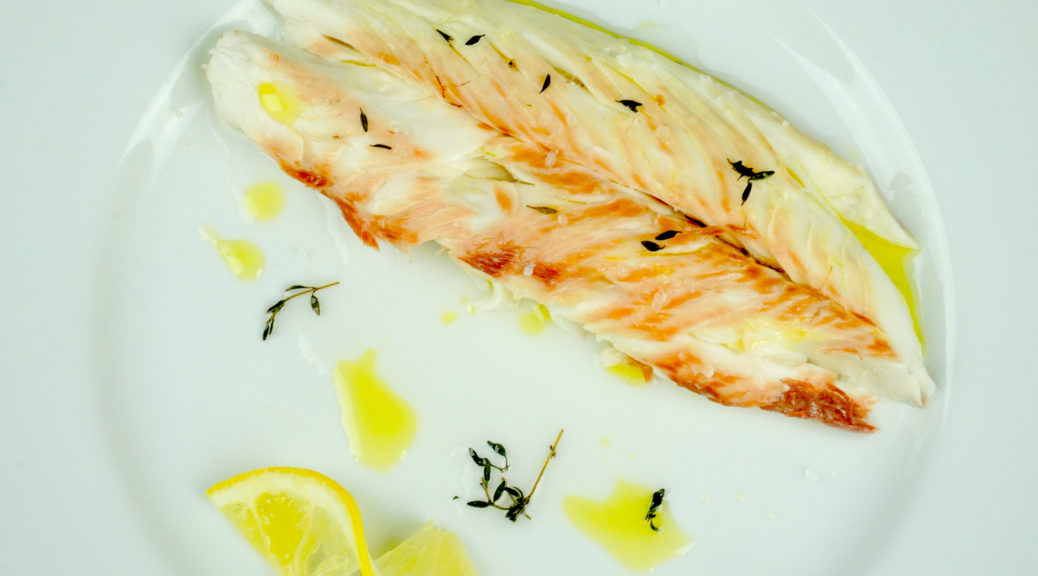
Under the Sea!
Salt Baked Fish
If you’re not familiar with José Andrés, he is a James Beard Award Winning Chef and specializes in traditional and modern Spanish cuisine. Since he is one of my favorite chefs, we searched the internet and found one of his recipes and found Salt Baked Fish on Food and Wine Magazine’s website. Living in South Florida we have access to fresh fish all year round and decided this would be a challenging dish to try. I’m always a little intimidated to replicate dishes written by award winning chefs, but the point is for us to try these recipes out for you and tell you about how it went. Let’s get started.
As always, we like to review the recipe to get a feel for what ingredients will be needed and if any prep work is required before starting. The ingredient list was short and entailed a whole fish with the scales on, salt, herbs and olive oil. We have a small herb garden and luckily we had all the items right outside out door. All we needed was a box or two of salt and the fish. Our local fish monger had a great selection of snapper and we went with the smallest one which was about 5 pounds. Yes, the smallest fish was that large. I told you he had a great selection. We have our usual crowd show up when the food is ready anyway, so we’ll just double the recipe. The cost for this fish was $38 and the 2 boxes of salt came out to $16 at the local supermarket.
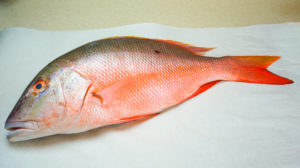
In the Let’s Cook That kitchen, we started out by prepping the herbs. The recipe calls for half the herbs to be separated and added to a bowl. It didn’t mention anything about what to do with them. Since we had to remove the stems, we figured we would stuff them in the fish. Where better to get the flavors and aromatics into the fish? We then started on the salt mixture and found that to be as easy as it gets. The proportion of salt to water was spot on. Just moist enough to hold together as it’s mounded over the fish. All we need to do now is give our fish a quick rinse and start building.
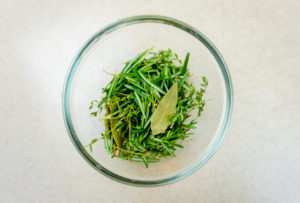
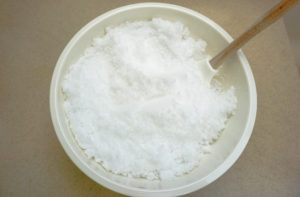
We started out by laying half of the salt mixture on a sheet pan. This was a large fish and we needed to make sure that it would cover the entire bottom part of the fish. We added a layer of the herbs over the salt and then gently placed the fish down over them. Although the recipe didn’t call for it, we added another layer of herbs over the top of this fish since we had a little extra. As we started layering the salt over the fish, it became apparent that we would need some more of the salt mixture to cover this monster. Making sure the salt was tightly packed over the entire fish, we ran into some issues covering the head of the fish. This probably would be a lot easier on a smaller fish that actually fit on the pan but we finally got it work and placed it in the oven.
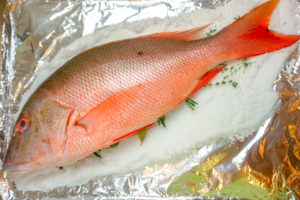
Normally, once something hits the oven, our regular crowd starts to gather but there wasn’t a strong enough scent in the air to get their attention. It took a little longer than we are used to but there it was, the herbs started perfuming the air and heads started popping out and asking, “What’s that smell?” The break in time was a nice change of pace and gave us time to enjoy a glass of wine and try and figure out how long we would have to cook the beast in the oven. Since we doubled the size of the fish, we decided to double the time. Usually this isn’t the case but it really was quiet a large fish.
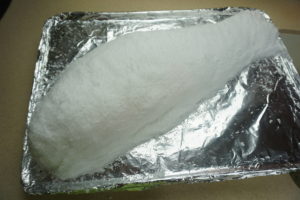
An hour later we removed the fish from the oven and placed it on the counter. The delightful smell it produced engulfed the house and gave us a preview of how this would taste. Using a knife, we cracked the salt and the pieces just fell off the top layer exposing the bright red skin of the fish. The recipe calls for the skin to be removed. Unless fried, the skin will have a tendency to get sticky and gooey. Leaving the scales on allows the skin to stay intact while removing without compromising the texture of the fish. No wonder the recipe said to leave the scales on.
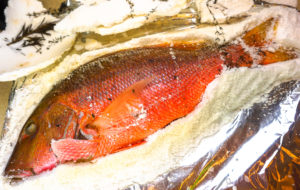
The fish was plated with a little olive oil and sea salt. You might be worried the fish would be salty but the salt acts a cocoon allowing the fish and herbs to steam inside the shell. As everyone started working on their plate, there was a silence as eyes opened wide and smiles came to everyone. After a few bites, we joined in and understood their reactions. The oohs and awes had to wait because there was still more on the plate. The fish was soft and flavorful as the herbs came across in each bite. The hint of sea salt and olive oil completed this almost flawless dish. This was the best piece of fish we have ever eaten, and we’ve had a lot of fish. We highly recommend this dish for its simplicity and flavor.
Rating:
Salt Encrusted Snapper
If you would like to get the full recipe for José Andrés Salt Baked Fish click here and check out the Food and Wine website.
